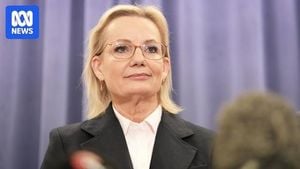US Federal Reserve Chair Jerome Powell recently indicated a likely shift toward more rate cuts as the economy remains on solid ground, yet he cautioned against rapid changes. Speaking at the National Association for Business Economics conference, Powell outlined the Fed’s strategy to carefully navigate interest rate adjustments without startling the market. Investors had speculated about steep cuts following the Fed's recent half-point decrease, but Powell emphasized the need for measured actions.
During Powell’s address, he reiterated, “If the economy evolves broadly as expected, policy will move over time toward a more neutral stance.” This statement reassured some, but also tempered expectations for immediate sharp reductions. The Fed is slowly transitioning from its aggressive inflation-fighting phase to one focused on supporting job growth and economic stability.
The Fed made headlines when it cut rates from 5.3% to 4.8% at their last meeting on September 18. According to Powell, officials foresee another two quarter-point cuts during the upcoming November and December meetings. These anticipated cuts reflect concerns over signs of slowing job growth, with economists underscoring the significance of upcoming labor reports. The September jobs report is eagerly awaited as potential data can influence future decisions.
The latest measures for inflation show mixed results. The Fed’s preferred inflation measure recorded 2.2% as of August, yet core inflation, which excludes food and energy prices, rose slightly to 2.7%. Meanwhile, the unemployment rate edged down to 4.2%, though this is still above last year's historic low of 3.4%. Hiring has stagnated, averaging around 116,000 new jobs each month over the last three months, significantly lower than previous rates.
According to Powell, these reductions aim to lower borrowing costs for consumers and businesses, thereby fostering economic activity. “Our decision... reflects our growing confidence,” he declared, underlining the Federal Reserve's commitment to balancing steady job growth and moderate inflation. While policymakers appear divided on the need for rapid changes, there are voices within the Fed advocating for quicker reductions.
Austan Goolsbee, president of the Chicago Fed, is among those who foresee more frequent rate cuts over the next year. Meanwhile, Tom Barkin, president of the Richmond Fed, advocates for caution, favoring gradual adjustments rather than quick shifts down to neutral levels.
The Fed's goal now encompasses dual priorities: ensuring stable prices alongside maximum employment. Powell articulated this approach, pointing out how the organization has pivoted from its previous focus on curbing inflation to also embracing labor statistics as equally important. He remarked, “Overall, the economy is in solid shape,” aiming to maintain this stability through calculated policy recalibration.
Despite some uncertainties surrounding inflation rates and employment figures, the Fed remains resolute about fostering sustained economic health. Powell's cautious yet optimistic outlook highlights the complexity of current economic conditions, illustrating how the Fed is adapting its strategies to maintain growth and address inflationary pressures without derailing the economic recovery.
With consumer confidence and spending playing determining roles, the Fed’s decisions will be pivotal for how the economy evolves moving forward. Investors and consumers alike are closely monitoring the situation as they await more data and upcoming Fed meetings to navigate the financial waters of the U.S. economy.



